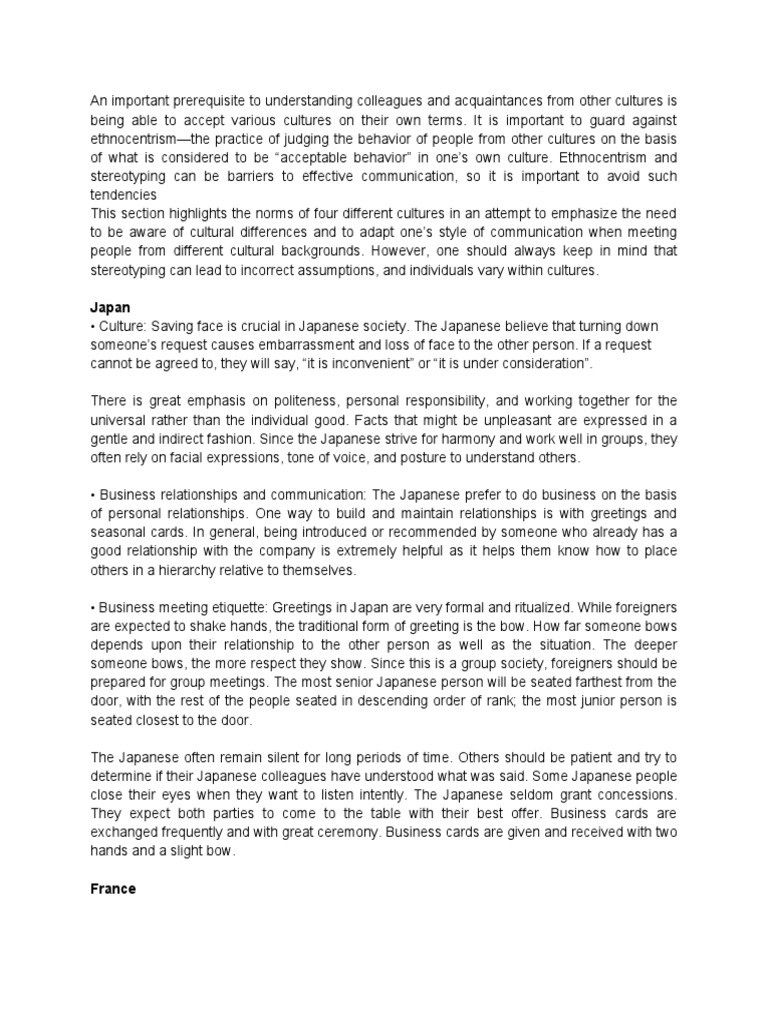Cultural diversity embodies the rich tapestry of human existence. Each thread, woven from myriad backgrounds, languages, and traditions, contributes to the kaleidoscope of society. The exploration of cultural diversity is akin to peeling an onion; each layer reveals unique insights about human identity, interaction, and understanding. This essay delves into the concept of cultural diversity, illustrating how its manifestations can lead to compelling examples that resonate deeply within various contexts.
To begin, cultural diversity can be exemplified through the lens of art. Artistic expressions serve as instrumental conduits for cultural transmission and introspection. Consider a gallery showcasing works from artists of different ethnicities. Each piece, a manifestation of its creator’s history, embodies a plethora of emotions and influences. The swirl of colors in an Aboriginal dot painting, for example, conveys stories of ancestral connection to the land, while the intricate designs of Persian carpets narrate histories of trade and craftsmanship. Such art pieces do not merely adorn walls; they evoke empathy, encouraging viewers to dive into unfamiliar narratives.
Furthermore, language stands as a crucial pillar of cultural diversity. Each language is steeped in the idiosyncrasies of its speakers, encapsulating unique worldviews and philosophies. The concept of “Saudade” in Portuguese describes a profound emotional state of nostalgic longing, a sentiment that may not have a direct translation in English. This linguistic uniqueness underlines how expressions of feeling and thought are inherently interconnected with cultural heritage. Language, therefore, becomes a vessel through which collective memories and identities are transmitted across generations. Each dialect and idiom adds to the linguistic mosaic: a treasure trove of expressions waiting to be explored and understood.
Moreover, culinary traditions offer another staggering display of cultural diversity. The act of sharing food transcends mere sustenance; it fosters community and bridges cultural divides. A joyous gathering around a table laden with dishes—from Indian curry to Italian lasagna—does more than satiate hunger; it signifies the melding of traditions. The spices of Indian cuisine reveal centuries of trade and migration, while rustic Italian pizza embodies regional pride and familial legacy. Each bite connects individuals to their heritage, illustrating the notion that food is not just a means of nourishment but a celebration of cultural identity.
The educational sphere is enriched by cultural diversity as well. Students from varied backgrounds bring distinct perspectives, enhancing discussions and collaborative projects. Consider a classroom where students hail from five continents, each sharing their customs, historical contexts, and societal challenges. This diversity encourages critical thinking and empathy, crafting an educational environment that prepares individuals for a globalized world. When students are exposed to divergent viewpoints, debate flourishes, and innovation thrives. Such interactions mirror the natural ecosystems where diverse species contribute to the resilience and adaptability of their habitat; the classroom becomes an ecosystem of ideas.
Additionally, the realm of music provides profound insights into cultural diversity. Music is a global language, effortlessly bridging divides. The rhythmic beats of African drums, the melodic strains of Indian classical music, and the harmonious chords of Western orchestras each tell a story. Indigenous sounds resonate with ancient traditions, while contemporary genres often reflect a fusion of myriad influences. The powerful voice of Reggae, rooted in Jamaican culture, echoes themes of resistance and resilience, demonstrating how music can articulate collective experiences and inspire social change. Festivals like Carnival or Diwali, rich with music and dance, not only exemplify cultural expressions but also unify communities in celebration.
A nuanced understanding of cultural diversity extends into the professional world as well. Organizations that embrace multiculturalism often experience increased creativity and improved problem-solving capabilities. Diverse teams foster an environment where multiple perspectives lead to balanced decision-making. In business, this equates to a competitive edge; products and services tailored to a global audience tend to resonate more deeply. As such, employers are increasingly recognizing the merit of a kaleidoscopic workforce, one which reflects the very essence of the societies they serve.
While celebrating cultural diversity, it is also essential to acknowledge the challenges that often accompany such richness. Misunderstandings, prejudice, and conflict can emerge when different cultures intersect without sensitivity or mutual respect. The journey towards an inclusive society requires vigilance, ongoing dialogue, and educational initiatives aimed at dispelling stereotypes. It invites individuals to approach one another with curiosity rather than judgment, fostering an atmosphere where appreciation for diversity can flourish.
In conclusion, cultural diversity is not merely an abstract concept; it is a tangible reality that enriches every facet of life. From art and language to food, education, music, and professional environments, the manifestations of cultural diversity lay the groundwork for a more empathetic, innovative, and cohesive world. Each example reinforces the profound truth that while our backgrounds may be distinct, the symphony of human experience resonates with shared aspirations and dreams. Engaging with cultural diversity is not only beneficial; it is vital in nurturing a resilient society able to navigate the complexities of an interconnected world.
